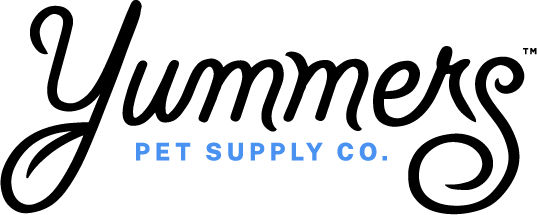

Discussing pet poop might not be our preferred topic over dinner, but as pet parents, understanding what's normal or alarming in your pet's stool can be vital. From consistency to color, every aspect of their fecal matter provides insights into their overall health, dietary needs, and potential underlying issues. Let's delve into the intricate details of assessing pet stool quality, the importance of anal gland and digestive health, and the crucial role of dietary fiber.
What Is a Healthy Poop for Pets?
When it comes to a healthy stool, it should be firm but not hard, moist but not liquid, and maintain its shape without being too dry or crumbly. The consistency of the stool is a reflection of your pet's internal health. For example, if the stool is watery or unusually soft, it might indicate gastrointestinal disturbances, infections, or dietary misadventures. Conversely, hard, pellet-like feces might suggest dehydration or a deficiency in dietary fiber. If you think your dog or cat is having digestive issues, contact your vet immediately. And don’t forget to supplement their diet with Yummers Digestive Aid Mix-In to help them feel their best at every age.

Looking Beyond Your Pet’s Stool Color
The color of the stool also offers significant clues. A chocolate-brown hue is typically a sign of a healthy digestive process. However, deviations from this can be cause for concern:
- Black or tar-like stools might indicate bleeding in the upper gastrointestinal tract.
- Bright red streaks can signify blood from the lower digestive system, potentially due to conditions like colitis.
- Pale or clay-colored feces might suggest liver, gallbladder, or pancreas issues, as bile isn't being processed or appropriately excreted.
- Green stools could mean the food is moving too quickly through the intestines or could result from consuming a significant amount of green-hued foods.
- Yellow or mustard-colored feces in dogs can sometimes indicate issues like food intolerances or problems in the liver or pancreas.
Why Pet’s Anal Glands Are Important
The health of the anal glands, two small sacs on either side of the anus, also plays into stool quality. These glands secrete a fluid during defecation. However, if the stool doesn't have the right consistency, these glands might not empty correctly, leading to potential complications. Keeping an eye on stool consistency can support healthy anal gland function. Yummers Digestive Aid Mix-In can provide extra support so their health stays at its best.

How Fiber Supports Pet Health
The dietary aspect cannot be overlooked, especially the role of fiber. There are two types: soluble and insoluble. Like that in oats or fruits, soluble fiber can absorb water, adding firmness to soft stools. In contrast, insoluble fiber in whole grains and veggies adds bulk to the stool, helping combat constipation. If you need to fine-tune your pet’s stool quality, consider gradually introducing fiber-rich foods, such as pumpkin, into their diet. Alongside, ensure they're well-hydrated and provide helpful supplements, further bolstering their digestive health.
While inspecting your pet's stool might seem unconventional, it's crucial to understanding their health. Always be vigilant; contact your veterinarian if you observe persistent or drastic changes. By being attentive, proactive, and supplementing with Yummers, you can ensure your dog or cat stays happy and healthy.





